#hackerrank programing
Explore tagged Tumblr posts
Text
The Thrill of Competitive Programming: A Deep Dive into Codeforces, AtCoder, and More
In the realm of software development, competitive programming stands out as a thrilling and intellectually stimulating activity. It challenges programmers to solve complex problems under tight time constraints, fostering skills that are invaluable in both academic and professional settings. This blog delves into the world of competitive programming, exploring its significance, benefits, and the…
#AI#amazon#apple#atcoder#chatgpt#codechef#codeforces#coding#competitive-programming#computer science#computer-science#cp#cpp#cs#css#DSA#google#hackerrank#java#javascript#leetcode#new#programming#python#tech
0 notes
Text
But hey if I get a job lined up for the start of next year maybe I /will/ just go fuck around in november and come back for a couple of family things later. Since apparently everything cool is happening then
#not even thinking abt sleep token bc iirc that’s all sold out anyways#that gal having a new job lined up and ready to hand in her resignation at her current spot has me so motivated tbh#maybe even motivated enough to get over my hatred of hackerrank and programming in general to actually do serious interview prep
1 note
·
View note
Text

Learn C & C++ Course With BBSMIT - 📌Gurukripa Enclave, Beside Hotel Raas Mahal, Near Old Ramgadhmod Busstand Jaipur, Rajasthan, 302002 - Mail us:- [email protected] Call or WhatsApp:- +91 98287 49889
#bbsmit#a2g#programmingmemes#codingmemes#cprogramming#pythonprogramming#code#operatingsystem#bugbounty#codinglife#hackerrank#linuxuser#c#clanguage#programming#coding#python#computerscience#java#programmer#javascript#coder#instagram#developer#clanguageprogramming#html
0 notes
Text
Staircase - HackerRank Problem Solving
Staircase is a Hackerrank problem from the Algorithms subdomain that requires an understanding of loops and string manipulation. In this post, you will learn how to solve Hackerrank’s Staircase problem and its solution in Python and C++.

Problem Statement and Explanation
Basically, we have to print a staircase of size n. The staircase should be right-aligned, composed of # symbols and spaces, and has a height and width of n.
Input Format
A single integer, n, denoting the size of the staircase.
Output Format
Print a staircase of size n using # symbols and spaces.
0 notes
Text
instagram
Learning to code and becoming a data scientist without a background in computer science or mathematics is absolutely possible, but it will require dedication, time, and a structured approach. ✨👌🏻 🖐🏻Here’s a step-by-step guide to help you get started:
1. Start with the Basics:
- Begin by learning the fundamentals of programming. Choose a beginner-friendly programming language like Python, which is widely used in data science.
- Online platforms like Codecademy, Coursera, and Khan Academy offer interactive courses for beginners.
2. Learn Mathematics and Statistics:
- While you don’t need to be a mathematician, a solid understanding of key concepts like algebra, calculus, and statistics is crucial for data science.
- Platforms like Khan Academy and MIT OpenCourseWare provide free resources for learning math.
3. Online Courses and Tutorials:
- Enroll in online data science courses on platforms like Coursera, edX, Udacity, and DataCamp. Look for beginner-level courses that cover data analysis, visualization, and machine learning.
4. Structured Learning Paths:
- Follow structured learning paths offered by online platforms. These paths guide you through various topics in a logical sequence.
5. Practice with Real Data:
- Work on hands-on projects using real-world data. Websites like Kaggle offer datasets and competitions for practicing data analysis and machine learning.
6. Coding Exercises:
- Practice coding regularly to build your skills. Sites like LeetCode and HackerRank offer coding challenges that can help improve your programming proficiency.
7. Learn Data Manipulation and Analysis Libraries:
- Familiarize yourself with Python libraries like NumPy, pandas, and Matplotlib for data manipulation, analysis, and visualization.
For more follow me on instagram.
#studyblr#100 days of productivity#stem academia#women in stem#study space#study motivation#dark academia#classic academia#academic validation#academia#academics#dark acadamia aesthetic#grey academia#light academia#romantic academia#chaotic academia#post grad life#grad student#graduate school#grad school#gradblr#stemblog#stem#stemblr#stem student#engineering college#engineering student#engineering#student life#study
8 notes
·
View notes
Text
Dev Log 6/6/25
Let's start with Thursday. Thursday I spent about 4ish hours working on the Minesweeper AI with ChatGPT. The program creates a board, prints the board, and can change the information on the board (only randomly right now). The AI at the moment is entirely random and the rules of the game are yet to be put in however we are able to simulate the start and end of a game alongside the process of selecting cells.
Today, I worked on my portfolio website. It's still not done, but I made some serious headway today. Today's main goal was getting images displayed where originally I only explained the game. Now there are title screen images that link to the details of the game. Next time, I will add details about what I did on each game. I also plan to add two more projects that are currently not listed.
For a quick list of all games I have worked on
+ Sole Survivor - a zombie shooter/escape game where you must repair your escape vehicle before you can leave the map. The game was made using Unity and C# programming alongside Unity's built in library.
+ Julien Jumper - A vertical platforming game that is bare bones as can be. The game was made using only the DX11 API for graphics and Git for version control.
+ MegaDude - It's pretty obvious what this was based on, this game was a side scrolling megaman clone. As is with Unreal we had a difficult time building a 2D game in a 3D environment but we succeeded, even got wall jumping. This was a game made using UE5.2 and Unreal's C++ library. For version control we used Git which was a problem for a while, we didn't find the .gitignore until day 3.
+ Noble Roots - the only game that I worked that did not finish development. We wanted but all the team members moved on after school wrapped up. For this game we were making a sprite based farm/life sim.
Next week all of these projects should be available on the website but for today, it looks like this.

The full changes are in the git repo: https://github.com/TyrantofChaos/strangegamedd/commits/main/ for those that want to see it.
Saturday/Sunday
Honkai Star Rail and Trails through Daybreak updates on https://www.tumblr.com/tyranochaos?source=share
Monday
My Birthday; still going to work on Python studies + HackerRank + Minesweeper AI
Tuesday
Project Valkyrie
+ Mouse Controls + Text Boxes + Design Change from Turn Based to Action Game
Wednesday
Midweek update blog
2 notes
·
View notes
Text
How do I learn Python in depth?
Improving Your Python Skills
Writing Python Programs Basics: Practice the basics solidly.
Syntax and Semantics: Make sure you are very strong in variables, data types, control flow, functions, and object-oriented programming.
Data Structures: Be able to work with lists, tuples, dictionaries, and sets, and know when to use which.
Modules and Packages: Study how to import and use built-in and third-party modules.
Advanced Concepts
Generators and Iterators: Know how to develop efficient iterators and generators for memory-efficient code.
Decorators: Learn how to dynamically alter functions using decorators.
Metaclasses: Understand how classes are created and can be customized.
Context Managers: Understand how contexts work with statements.
Project Practice
Personal Projects: You will work on projects that you want to, whether building a web application, data analysis tool, or a game.
Contributing to Open Source: Contribute to open-source projects in order to learn from senior developers. Get exposed to real-life code.
Online Challenges: Take part in coding challenges on HackerRank, LeetCode, or Project Euler.
Learn Various Libraries and Frameworks
Scientific Computing: NumPy, SciPy, Pandas
Data Visualization: Matplotlib, Seaborn
Machine Learning: Scikit-learn, TensorFlow, PyTorch
Web Development: Django, Flask
Data Analysis: Dask, Airflow
Read Pythonic Code
Open Source Projects: Study the source code of a few popular Python projects. Go through their best practices and idiomatic Python.
Books and Tutorials: Read all the code examples in books and tutorials on Python.
Conferences and Workshops
Attend conferences and workshops that will help you further your skills in Python. PyCon is an annual Python conference that includes talks, workshops, and even networking opportunities. Local meetups will let you connect with other Python developers in your area.
Learn Continuously
Follow Blogs and Podcasts: Keep reading blogs and listening to podcasts that will keep you updated with the latest trends and developments taking place within the Python community.
Online Courses: Advanced understanding in Python can be acquired by taking online courses on the subject.
Try It Yourself: Trying new techniques and libraries expands one's knowledge.
Other Recommendations
Readable-Clean Code: For code writing, it's essential to follow the style guide in Python, PEP
Naming your variables and functions as close to their utilization as possible is also recommended.
Test Your Code: Unit tests will help in establishing the correctness of your code.
Coding with Others: Doing pair programming and code reviews would provide you with experience from other coders.
You are not Afraid to Ask for Help: Never hesitate to ask for help when things are beyond your hand-on areas, be it online communities or mentors.
These steps, along with consistent practice, will help you become proficient in Python development and open a wide range of possibilities in your career.
2 notes
·
View notes
Text
How should I start learning Python?
The best way to learn Python programming is through a combination of theoretical knowledge and practical experience. Here are some steps you can follow:
1. Start with the basics: Understand the syntax, data types, and control structures of Python.
2. Practice coding: Websites like LeetCode, HackerRank, and CodeWars offer a variety of coding challenges.
3. Work on projects: Apply your knowledge by building real-world projects, such as web scrapers, chatbots, or games.
4. Join a community: Participate in online communities like Reddit's r/learnpython and r/Python, and attend meetups and conferences.
My suggest in To accelerate your learning journey, consider enrolling in VK Academy's Python course! Their expert trainers provide personalized guidance, hands-on exercises, and real-world projects to help you become a proficient Python programmer.

2 notes
·
View notes
Text
java full stack
A Java Full Stack Developer is proficient in both front-end and back-end development, using Java for server-side (backend) programming. Here's a comprehensive guide to becoming a Java Full Stack Developer:
1. Core Java
Fundamentals: Object-Oriented Programming, Data Types, Variables, Arrays, Operators, Control Statements.
Advanced Topics: Exception Handling, Collections Framework, Streams, Lambda Expressions, Multithreading.
2. Front-End Development
HTML: Structure of web pages, Semantic HTML.
CSS: Styling, Flexbox, Grid, Responsive Design.
JavaScript: ES6+, DOM Manipulation, Fetch API, Event Handling.
Frameworks/Libraries:
React: Components, State, Props, Hooks, Context API, Router.
Angular: Modules, Components, Services, Directives, Dependency Injection.
Vue.js: Directives, Components, Vue Router, Vuex for state management.
3. Back-End Development
Java Frameworks:
Spring: Core, Boot, MVC, Data JPA, Security, Rest.
Hibernate: ORM (Object-Relational Mapping) framework.
Building REST APIs: Using Spring Boot to build scalable and maintainable REST APIs.
4. Database Management
SQL Databases: MySQL, PostgreSQL (CRUD operations, Joins, Indexing).
NoSQL Databases: MongoDB (CRUD operations, Aggregation).
5. Version Control/Git
Basic Git commands: clone, pull, push, commit, branch, merge.
Platforms: GitHub, GitLab, Bitbucket.
6. Build Tools
Maven: Dependency management, Project building.
Gradle: Advanced build tool with Groovy-based DSL.
7. Testing
Unit Testing: JUnit, Mockito.
Integration Testing: Using Spring Test.
8. DevOps (Optional but beneficial)
Containerization: Docker (Creating, managing containers).
CI/CD: Jenkins, GitHub Actions.
Cloud Services: AWS, Azure (Basics of deployment).
9. Soft Skills
Problem-Solving: Algorithms and Data Structures.
Communication: Working in teams, Agile/Scrum methodologies.
Project Management: Basic understanding of managing projects and tasks.
Learning Path
Start with Core Java: Master the basics before moving to advanced concepts.
Learn Front-End Basics: HTML, CSS, JavaScript.
Move to Frameworks: Choose one front-end framework (React/Angular/Vue.js).
Back-End Development: Dive into Spring and Hibernate.
Database Knowledge: Learn both SQL and NoSQL databases.
Version Control: Get comfortable with Git.
Testing and DevOps: Understand the basics of testing and deployment.
Resources
Books:
Effective Java by Joshua Bloch.
Java: The Complete Reference by Herbert Schildt.
Head First Java by Kathy Sierra & Bert Bates.
Online Courses:
Coursera, Udemy, Pluralsight (Java, Spring, React/Angular/Vue.js).
FreeCodeCamp, Codecademy (HTML, CSS, JavaScript).
Documentation:
Official documentation for Java, Spring, React, Angular, and Vue.js.
Community and Practice
GitHub: Explore open-source projects.
Stack Overflow: Participate in discussions and problem-solving.
Coding Challenges: LeetCode, HackerRank, CodeWars for practice.
By mastering these areas, you'll be well-equipped to handle the diverse responsibilities of a Java Full Stack Developer.
visit https://www.izeoninnovative.com/izeon/
2 notes
·
View notes
Text
From Novice to Java Pro: A Step-by-Step Learning Journey
Java programming, renowned for its platform independence and versatility, is a sought-after language in the world of software development. It's the language behind countless web applications, mobile apps, game development, and more. This blog serves as your comprehensive guide to embarking on a journey to learn and master Java programming. We'll walk you through the basics of programming, Java's syntax and structure, the essential tools and libraries, and the importance of practice.
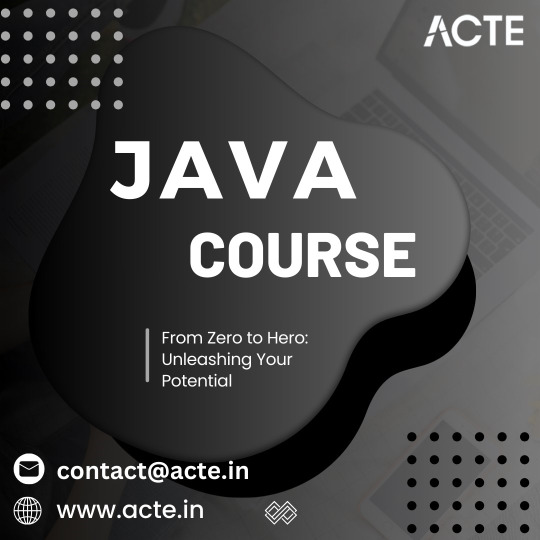
The Path to Java Proficiency:
1. Understand the Basics of Programming:
Prior Experience: If you're new to programming, it's crucial to start with the foundational concepts. Variables, data types, control structures (if-else, loops), and functions are universal principles that you need to understand before delving into any programming language, including Java.
What to Learn: Begin by grasping the basics of programming logic and problem-solving. Familiarize yourself with concepts like variables (to store data), data types (to specify the kind of data), and control structures (to make decisions and loop through actions). These concepts serve as the building blocks for Java programming.
2. Java Syntax and Structure:
Prior Experience: As you delve into Java, you'll find that it's an object-oriented language with its unique syntax and structure. While prior programming experience is beneficial, it's not a prerequisite. You can start with Java as your first language.
What to Learn: Java introduces you to classes and objects. Classes are blueprints for creating objects, which are instances of classes. Java is known for its object-oriented nature, where you'll encounter concepts like inheritance (creating new classes based on existing ones), polymorphism (objects of different classes can be treated as objects of the same class), encapsulation (data hiding), and abstraction (simplifying complex reality by modeling classes based on real-world objects).
3. Get Your Hands on a Compiler and IDE:
Prior Experience: No prior experience is required to set up your Java development environment.
What to Learn: To start writing and running Java code, you'll need to install a Java Development Kit (JDK), which includes the Java compiler (javac). This kit allows you to compile your source code into bytecode that the Java Virtual Machine (JVM) can execute. Additionally, install an Integrated Development Environment (IDE) like Eclipse, IntelliJ IDEA, or NetBeans. These IDEs provide a user-friendly interface for coding, debugging, and managing your Java projects.
4. Learn the Java Standard Library:
Prior Experience: No specific prior experience is necessary, but familiarity with basic programming concepts is beneficial.
What to Learn: Java's power lies in its extensive standard library. This library includes pre-built classes and packages that simplify common programming tasks. For example, you can utilize classes in the java.io package to handle file input and output. You'll explore the java.lang package, which provides fundamental classes like String and Integer. Understanding this library is crucial for performing operations like file handling, string manipulation, and working with data structures.
5. Practice, Practice, Practice:
Prior Experience: No prior experience is required. This stage is suitable for beginners and those with basic programming knowledge.
What to Learn: The key to mastering Java or any programming language is practice. Apply the knowledge you've gained by working on small coding projects. Start with simple programs and gradually move on to more complex tasks. Solving programming challenges, such as those on websites like LeetCode or HackerRank, is an excellent way to put your skills to the test. Build simple applications to get hands-on experience in real-world scenarios.
6. Join Java Communities:
Prior Experience: No prior experience is needed to join Java communities.
What to Learn: Engage with Java communities and forums, such as Stack Overflow or Reddit's r/java. These platforms provide a space to ask questions, seek advice, and learn from experienced Java developers. You can also contribute by answering questions and sharing your knowledge.
7. Enroll in Java Courses:
Prior Experience: Enrolling in Java courses is suitable for learners of all levels, from beginners to advanced users.
What to Learn: ACTE Technologies offers comprehensive Java training programs that cater to a diverse range of learners. These programs are designed to provide hands-on experience and real-world examples, ensuring that you gain practical skills in Java programming.

In your journey to master Java programming, structured training plays a pivotal role. ACTE Technologies is a trusted partner, offering Java training programs for learners at all levels. Whether you're a beginner taking your first steps in Java or an experienced programmer seeking to expand your skill set, they can provide the guidance and resources needed to excel in the world of Java development. Consider exploring their Java courses to kickstart or enhance your Java programming journey. Java programming is a versatile and essential language, and mastering it is a rewarding journey. With dedication, practice, and structured training, you can become a proficient Java developer. Institutions like ACTE Technologies offer valuable resources and courses to accelerate your learning process, making your journey to Java mastery even more efficient.
7 notes
·
View notes
Text
Tips for the Best Way to Learn Python from Scratch to Pro
Python, often regarded as one of the most beginner-friendly programming languages, offers an excellent entry point for those looking to embark on a coding journey. Whether you aspire to become a Python pro or simply want to add a valuable skill to your repertoire, the path to Python proficiency is well-paved. In this blog, we’ll outline a comprehensive strategy to learn Python from scratch to pro, and we’ll also touch upon how ACTE Institute can accelerate your journey with its job placement services.

1. Start with the basics:
Every journey begins with a single step. Familiarise yourself with Python’s fundamental concepts, including variables, data types, and basic operations. Online platforms like Codecademy, Coursera, and edX offer introductory Python courses for beginners.
2. Learn Control Structures:
Master Python’s control structures, such as loops and conditional statements. These are essential for writing functional code. Sites like HackerRank and LeetCode provide coding challenges to practice your skills.
3. Dive into Functions:
Understand the significance of functions in Python. Learn how to define your functions, pass arguments, and return values. Functions are the building blocks of Python programmes.
4. Explore Data Structures:
Delve into Python’s versatile data structures, including lists, dictionaries, tuples, and sets. Learn their usage and when to apply them in real-world scenarios.
5. Object-Oriented Programming (OOP):
Python is an object-oriented language. Learn OOP principles like classes and objects. Understand encapsulation, inheritance, and polymorphism.
6. Modules and Libraries:
Python’s strength lies in its extensive libraries and modules. Explore popular libraries like NumPy, Pandas, and Matplotlib for data manipulation and visualisation.
7. Web Development with Django or Flask:
If web development interests you, pick up a web framework like Django or Flask. These frameworks simplify building web applications using Python.
8. Dive into Data Science:
Python is a dominant language in the field of data science. Learn how to use libraries like SciPy and Scikit-Learn for data analysis and machine learning.
9. Real-World Projects:
Apply your knowledge by working on real-world projects. Create a portfolio showcasing your Python skills. Platforms like GitHub allow you to share your projects with potential employers.
10. Continuous learning:
Python is a dynamic language, with new features and libraries regularly introduced. Stay updated with the latest developments by following Python communities, blogs, and podcasts.

The ACTE Institute offers a structured Python training programme that covers the entire spectrum of Python learning. Here’s how they can accelerate your journey:
Comprehensive Curriculum: ACTE’s Python course includes hands-on exercises, assignments, and real-world projects. You’ll gain practical experience and a deep understanding of Python’s applications.
Experienced Instructors: Learn from certified Python experts with years of industry experience. Their guidance ensures you receive industry-relevant insights.
Job Placement Services: One of ACTE’s standout features is its job placement assistance. They have a network of recruiting clients, making it easier for you to land a Python-related job.
Flexibility: ACTE offers both online and offline Python courses, allowing you to choose the mode that suits your schedule.
The journey from Python novice to pro involves continuous learning and practical application. ACTE Institute can be your trusted partner in this journey, providing not only comprehensive Python training but also valuable job placement services. Whether you aspire to be a Python developer, data scientist, or web developer, mastering Python opens doors to diverse career opportunities. So, take that first step, start your Python journey, and let ACTE Institute guide you towards Python proficiency and a rewarding career.
I hope I answered your question successfully. If not, feel free to mention it in the comments area. I believe I still have much to learn.
If you feel that my response has been helpful, make sure to Follow me on Tumblr and give it an upvote to encourage me to upload more content about Python.
Thank you for spending your valuable time and upvotes here. Have a great day.
6 notes
·
View notes
Text
10 Days of JavaScript Collection
#algorithm#data structures#hackerrank#10daysofjavascript#javascript#coding#programming#software#codeperfectplus
1 note
·
View note
Text
Unlocking Full-Stack Development: A Comprehensive Roadmap for Aspiring Developers in India
In the era of digital transformation, the demand for skilled full-stack developers in India is soaring. These versatile professionals proficient in both frontend and backend development are essential for building dynamic web applications. If you're aspiring to become a full-stack developer in India, this comprehensive roadmap will guide you through the steps to achieve your goal.

1. Grasp the Essentials of Web Development: To kickstart your journey as a full-stack developer, begin by mastering the core concepts of web development. Dive into HTML, CSS, and JavaScript—the fundamental languages for creating web pages. Understanding these basics lays a solid foundation for your future endeavors.
2. Select a Backend Language and Framework: Once you're comfortable with frontend technologies, delve into backend development by choosing a programming language and framework. Options like Python with Django, JavaScript with Node.js, or Ruby with Ruby on Rails are popular choices. These backend technologies empower you to handle server-side logic and data management efficiently.
3. Acquire Proficiency in Database Management: Database management is a critical aspect of full-stack development. Familiarize yourself with database systems such as MySQL, PostgreSQL, or MongoDB. Learn database querying, indexing, and normalization to effectively store and retrieve data for your web applications.
4. Explore Frontend Frameworks and Libraries: Enhance your frontend development skills by mastering popular frameworks and libraries. React.js, Angular, and Vue.js are widely used for building dynamic user interfaces. Dive deep into these tools to create interactive components and manage application state seamlessly.
5. Embrace Version Control Systems: Version control is indispensable for collaborative software development. Get hands-on experience with Git and platforms like GitHub or GitLab. Learn to create repositories, commit changes, and collaborate with other developers to streamline your workflow.
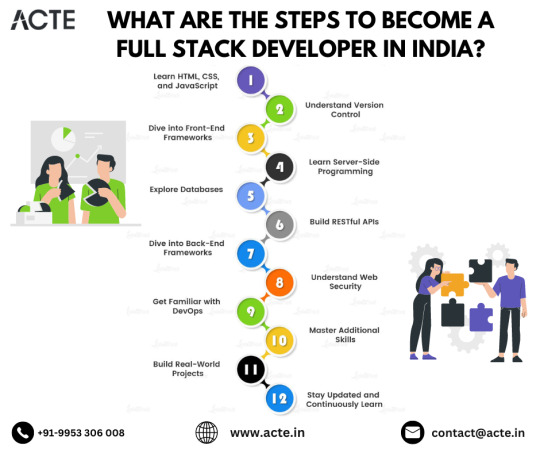
6. Sharpen Your Problem-Solving Skills: Problem-solving is a core competency for any developer. Practice solving coding challenges and algorithms on platforms such as LeetCode, HackerRank, or CodeSignal. Strengthening your problem-solving abilities will prepare you for technical interviews and real-world coding scenarios.
7. Develop Projects and Build a Portfolio: Apply your knowledge by working on diverse projects that showcase your full-stack development skills. Start with simple projects and gradually tackle more complex ones to demonstrate your proficiency. Create a portfolio website to exhibit your projects, expertise, and accomplishments to potential employers.
8. Stay Abreast of Industry Trends: The tech landscape evolves rapidly, so it's crucial to stay updated with the latest trends and technologies. Attend tech meetups, workshops, and conferences to network with industry professionals and learn from their experiences. Follow influential blogs, podcasts, and social media channels to stay informed about emerging trends and best practices.
9. Pursue Internship Opportunities: Internships provide invaluable hands-on experience and exposure to real-world projects. Look for internship opportunities at companies or startups where you can apply your skills in a professional environment. Internships also offer opportunities for mentorship and networking, which can be invaluable for your career growth.
10. Cultivate a Continuous Learning Mindset: Becoming a full-stack developer is a journey of lifelong learning and growth. Stay curious, explore new technologies, and continuously expand your skill set. Be open to adapting to new challenges and opportunities as they arise, and embrace a growth mindset to thrive in the ever-evolving tech industry.
Conclusion: Mastering full-stack development in India requires dedication, perseverance, and a commitment to lifelong learning. By following this comprehensive roadmap, you can acquire the skills and knowledge needed to excel in this dynamic and rewarding field. So, roll up your sleeves, embark on your full-stack development journey, and unlock a world of endless possibilities in India's thriving tech ecosystem.
#full stack developer#information#education#front end development#full stack web development#full stack developer course#frameworks#backend#technology#web development
2 notes
·
View notes
Text
Best Data Structures and Algorithms Course
Data Structures and Algorithms are the backbone of computer science. They are essential for solving complex problems efficiently, making them indispensable skills for programmers and software developers. To master these concepts, it's crucial to choose the right course. In this article, we'll explore some of the best-known courses available online, and we'll also introduce you to scholarhat's Best Data Structures and Algorithms Course, a program designed to take your understanding to the next level.
1.Udemy - Data Structures and Algorithms: Deep Dive Using JavaUdemy Data Structures and Algorithms CourseThis course provides a comprehensive understanding of Data Structures and Algorithms using Java. It covers a wide range of topics with hands-on coding exercises. 2. Scholarhat - Best Data Structures and Algorithms Course
scholarhat Best Data Structures and Algorithms Course
When it comes to mastering Data Structures and Algorithms, scholarhat's Best Data Structures and Algorithms Course stands out as an exceptional choice. With a curriculum meticulously designed by experts, this program combines theoretical knowledge with hands-on coding exercises. Moreover, the course emphasizes practical application, ensuring you're not only learning the theory but also applying it in real-world scenarios. With experienced instructors and a supportive community, this course offers an unparalleled learning experience.
3. LinkedIn Learning - Learning Data Structures and AlgorithmsLinkedIn Learning Data Structures and Algorithms CourseThis course offers a practical approach to learning Data Structures and Algorithms, with a focus on real-world applications.
4. GeeksforGeeks - Data Structures and AlgorithmsGeeksforGeeks Data Structures and Algorithms CourseGeeksforGeeks offers a plethora of tutorials, articles, and practice problems on Data Structures and Algorithms. It's a valuable resource for self-paced learning.
5. Codecademy - AlgorithmsCodecademy Algorithms CourseCodecademy provides an interactive platform for learning algorithms. The course is suitable for beginners and covers essential algorithmic concepts.
6. LeetCode - Data Structures and AlgorithmsLeetCodeWhile not a traditional course, LeetCode is a popular platform for practicing Data Structures and Algorithms through coding challenges. It's an excellent resource to reinforce your skills.
7. YouTube - MyCodeSchoolMyCodeSchool YouTube ChannelMyCodeSchool offers a series of video tutorials on Data Structures and Algorithms. The tutorials are clear, concise, and perfect for visual learners.
8. Hackerrank - Data StructuresHackerrank Data Structures CourseHackerrank offers a series of tutorials and challenges to help you master various data structures.
9. Princeton University - Algorithms Part I and Part II (Coursera)Princeton University Algorithms Part I Princeton University Algorithms Part IIThis series of courses covers fundamental algorithms and data structures, taught by renowned professors from Princeton University. Conclusion
Selecting the right course to master Data Structures and Algorithms is crucial for any aspiring programmer. The courses mentioned above offer excellent options for learners at various levels of expertise. However, for an exceptional learning experience, consider enrolling in scholarhat's Best Data Structures and Algorithms Course. With its industry-leading curriculum and personalized support, it's the perfect choice to advance your skills in this critical area of computer science.
Enroll in scholarhat's course now. Take the first step towards becoming a Data Structures and Algorithms expert!
5 notes
·
View notes
Text
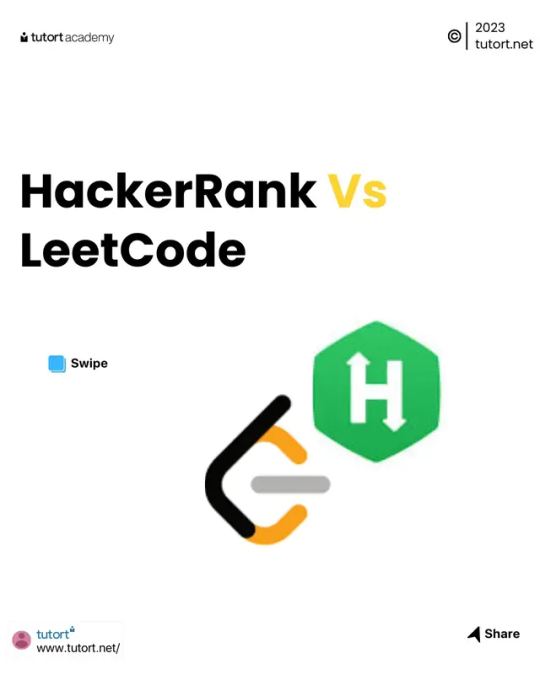
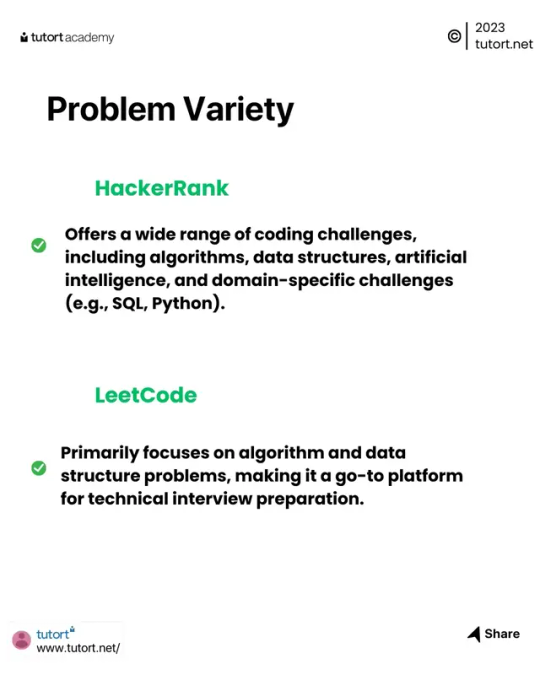
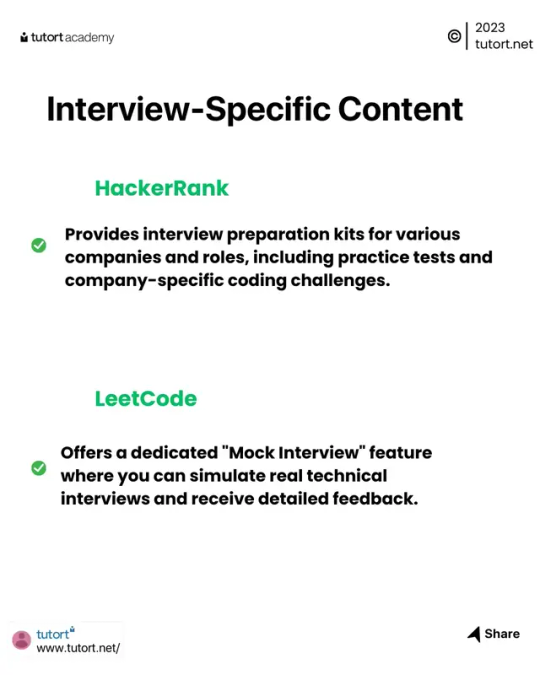
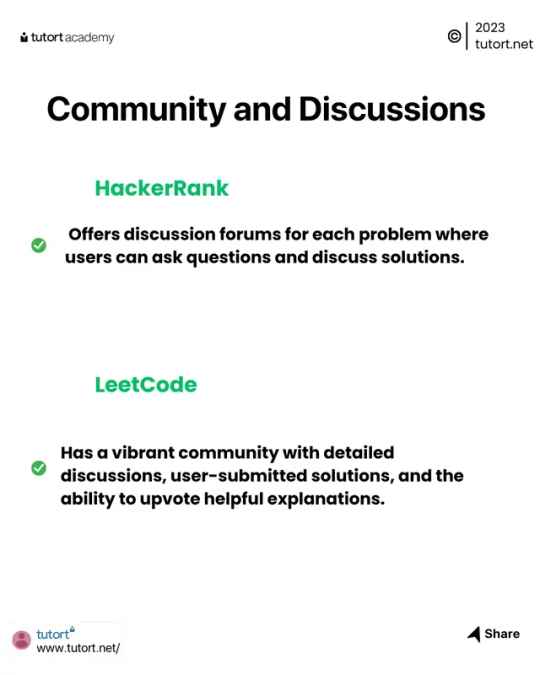
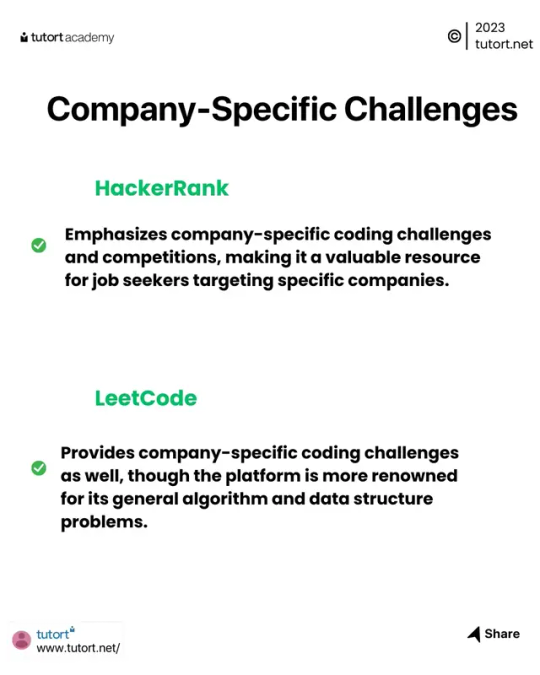
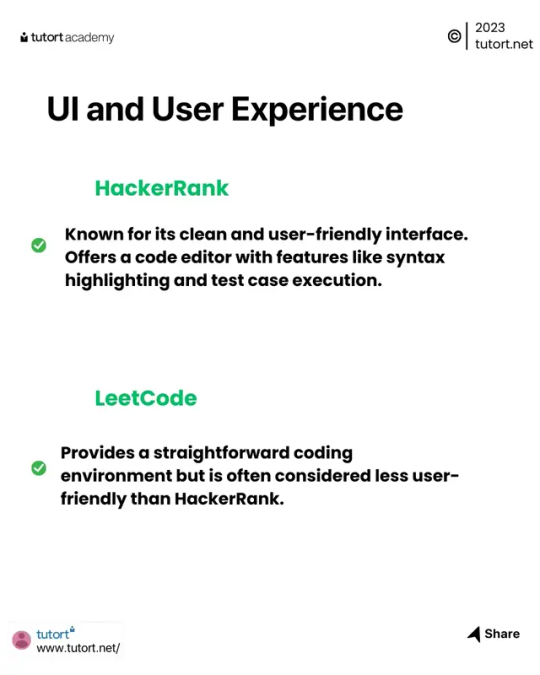
HackerRank Vs LeetCode 🔥
HackerRank and LeetCode are popular online competitive programming platforms for software engineers who are looking to practice for their technical interviews👩💻
Both platforms are great ways to provide an easy way to practice common algorithmic and data structure problems in preparation for an interview 💻
➡️ Let's see the difference between HackerRank and LeetCode👆
➡️ If you want to start your career into the field of data science, ML and AI visit here-- www.tutort.net 📍
2 notes
·
View notes